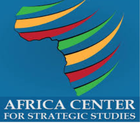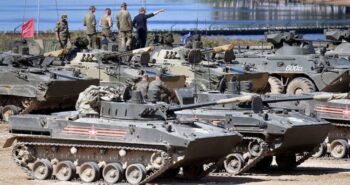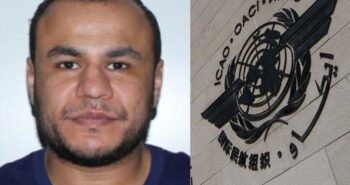By Khadeja Ramali (Interviewed by The Africa Center)
 Divisions within Libya’s civil war have been amplified by foreign-sponsored disinformation campaigns. Reconciliation and peacebuilding will require local actors to reclaim Libya’s digital spaces.
Divisions within Libya’s civil war have been amplified by foreign-sponsored disinformation campaigns. Reconciliation and peacebuilding will require local actors to reclaim Libya’s digital spaces.
.
PART (I)
Nested within Libya’s ongoing civil war are a fog of falsehoods, distortions, and polarizing narratives that have engulfed Libyan social media networks and online news outlets.
Content created and fueled by foreign actors adds to the confusion. Difficulty in identifying the truth has fueled demoralization and distrust among many Libyans.
Libya’s conflict pits the United Nations-recognized Government of National Accord (GNA), based out of Tripoli in the west, against an assortment of militias aligned with warlord Khalifa Haftar’s Libyan National Army (LNA), controlling territory in the east.
For destabilizing actors like Haftar (supported by Egypt, Russia, Saudi Arabia, and the United Arab Emirates), overrunning digital spaces with disinformation has been seen as a means to achieve conquests on the ground.
Haftar’s forces have sought to gain advantage in their struggle by sowing confusion about the motives and tactics of rival groups while making it more difficult to obtain information that may cost the LNA popular support among ordinary Libyans.
He has been aided by online firms tied to Russian oligarch Yevgeny Prigozhin and his Wagner Group of Russian mercenaries who have pushed divisive narratives into Libya’s social media networks.
The foreign-backed efforts to undermine the formation of an informed and democratically-engaged public in Libya’s digital spaces are likely to persist beyond any ceasefires negotiated on the battlefield.
The Africa Center spoke with Khadeja Ramali, a leading expert on Libyan social media and the founder of a digital community for Libyan women, about this challenging environment and the strategies that Libyans are developing to counter disinformation online.
* * *
Who is creating and spreading disinformation in Libya and what forms of disinformation are most prevalent within the country’s digital spaces?
Currently, digital spaces in Libya are highly fragmented and influenced by varying degrees of disinformation from an array of local, state, and international actors. The most sophisticated and coordinated disinformation campaigns have come from foreign states, particularly the UAE, Saudi Arabia, and Egypt in direct support of the LNA and Russia’s multifaceted interference in the local media environments in ways that often benefit the LNA.
These foreign actors have been able to use Libya’s digital space as a means of advancing their interests without bearing the destabilizing consequences of their actions.
Going back to 2014, large networks of UAE and Saudi fake Twitter accounts have been actively crowding out actual local voices by posting, creating hashtag traffic for, and amplifying nationalistic sentiments in Libya.
Beginning in 2019, thousands of these accounts were mobilized to glorify Haftar and his military campaign. This includes invoking imagery of Omar Mukhtar’s (early twentieth century) struggles against Italian colonialism to link the LNA with the fight against foreign invaders and terrorists.
Another tactic of these fake accounts is to Arabize the conflict and to cast Turkey, which backs the GNA, as the Ottoman Empire, evoking Libya as “the graveyard of the Turks.”
For each social media campaign, these accounts would localize their message depending on their targets and aims. Many of these campaigns were outsourced through Egyptian firms that were familiar with Libyan dialects and local issues.
Russian-backed actors connected to the Wagner Group, meanwhile, have been more active on Facebook and have developed subtler forms of disinformation by hiring Libyan consultants to create locally “franchised” groups, which can more nimbly sow disinformation that resonates with Libyans.
These groups pick up on local grievances and inflame them by bringing polarizing subjects back into the public eye in order to attract passionate online followers who are then primed to be more receptive to Russia’s narratives of the conflict.
Many of these narratives appear to have been pilots – testing out different and even conflicting messages – to see what might generate the most sensational effect. The UAE and Saudi accounts, in contrast, were highly coordinated in their attempts to amplify specific goals.
On the GNA side, the data we have so far shows that Turkey and Qatar have been much less active in producing digital disinformation and have placed more resources and emphasis on messaging through their traditional state-backed television and media channels rather than through fake or franchised social media accounts.
They don’t do the same scale of coordinated online disinformation or manipulation, in part because, unlike the LNA and Haftar’s forces which are regularly linked to human rights abuses, the GNA feels less need to vilify the other side in order to excuse their actions to citizens.
Finally, at the local level, we have non-state armed actors shaping the information environment. The largest of these is the GNA-aligned Misrata cluster.
They have a very active Facebook presence. They run a pretty smooth operation with what I call “war influencers,” who are so-called citizen journalists, or the militias themselves streaming content directly from the frontlines. They do a lot of videography, and it’s mostly done in-house.
The content of these posts is aimed toward keeping up morale, gaining public support, and vilifying the enemy through their platforms. Other smaller militias do this as well, though they are not as digitally savvy. All of the disinformation produced by these groups is basically the same kind of narrow, low-level claims that they’ve captured prisoners or enemy equipment, which may or may not be true.
These claims don’t appear to be coordinated and are nothing on the scale of what we’ve seen in terms of larger narratives produced by the UAE and Saudi networks.
How have digital landscapes in Libya changed over the past decade?
In 2011, only a tiny fraction of Libya’s 6.5 million citizens were active online or had smartphones. The digital space was heavily monitored by the Qaddafi regime and an internet connection was expensive. That started to change significantly after the revolution.
By 2013, there was a lot of activity as Libyans began joining online spaces and as digital media spaces were energized—though often still run by members of the Libyan diaspora.
There was a lot of capacity training by international organizations. As the conflict and civil war began to break out, there were numerous murders and kidnappings targeting well-known media figures in Libya.
Benghazi at one point had so many assassinations that monitors started to lose count. People became scared of being outspoken online.
Out of fear, most Libyans disengaged with online discussions of politics or current affairs and stayed away from public online spaces and preferred to engage in small closed online groups.
Even these conversations were often guarded, however, since they could be infiltrated by outsiders with malicious aims. So, online spaces became fragmented and there became an information vacuum.
International media coverage died down, and people weren’t talking about what was happening. As a result, only those affiliated and protected by armed groups, political parties like the Muslim Brotherhood, or other powerful groups were left to fill the void.
Things really went downhill after 2014 with the Qatari-backed “Libyan Dawn” militias’ seizure of Tripoli and the evacuation of the international community from Libya.
There wasn’t any in-country independent media or any reliable information that wasn’t filtered through specific foreign-funded channels. It was and still remains a confusing space.
One person’s terrorist is another person’s freedom fighter. More recently, we have seen fake journalistic personas created to publish propaganda in various media outlets, including policy recommendations regarding the Libyan conflict.
Furthermore, social media personalities and war influencers lead the efforts to push hate-filled narratives and political campaigns to Libyan audiences.
***
Khadeja Ramali is an independent consultant who has worked on issues involving community and digital spaces in Libya since 2014. She is a geophysicist and co-founder of Project Silphium. She has been collaborating with Libyan women’s Radio Network Project, which aims to expand the capacity of women media professionals in Libya.
__________





